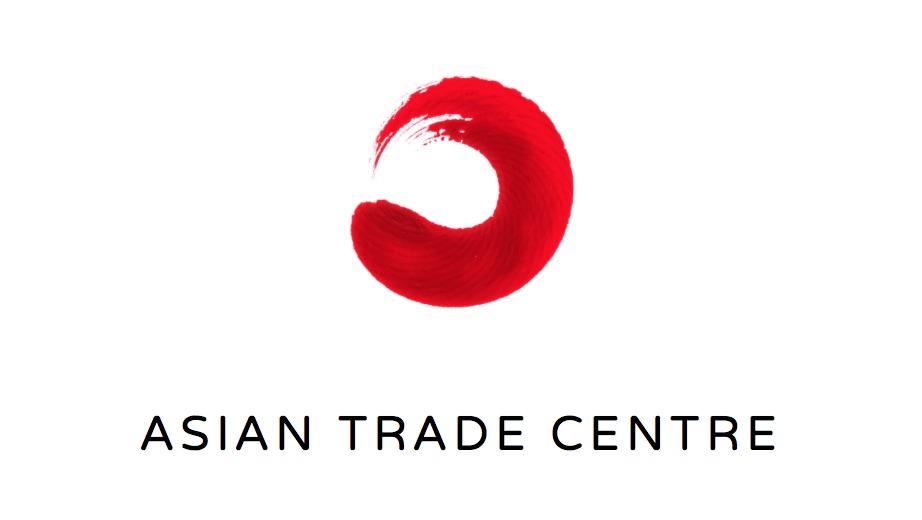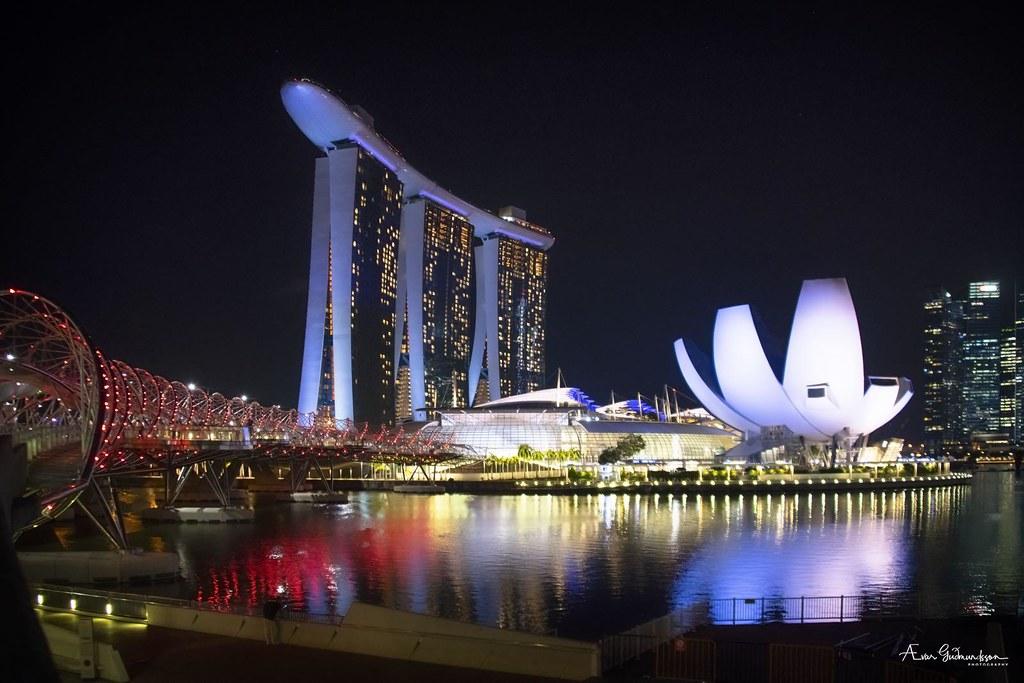Listen to this podcast on Spotify, Apple Podcasts, Podbean, Podtail, ListenNotes, TuneIn, PodChaser
Season 1, Episode 45
Host: Deepesh Patel (DP), Editor, Trade Finance Global
Featuring: Dr. Deborah Elms, CEO, Asian Trade Centre

Trade in Asia is changing at an alarming pace. The US-China trade war continues to grind on, firms are now seriously thinking about their existing supply chain footprints, and understanding the importance of free trade agreements in and around APAC has never been more important.
Deepesh Patel (DP): Today I’m delighted to be joined by Dr. Deborah Elms, CEO at Asian Trade Centre. Deborah, welcome to Trade Finance Talks!
Deborah Elms (DE): Thank you very much.
DP: So if we could start with a brief introduction – a 30 second elevator pitch, who are you, where are you from, and what do you do?

DE: So I run the Asian Trade Centre out of Singapore. I am an American, but I’ve been here in Singapore for more than 16 years. We work with companies and governments on designing better trade and trade policies in the region. To do that, we work in a trade association and we also work with governments. We do this because in Asia, that business-government link that is so common in other places, is less well developed and more about ‘which firm knows which government official’, rather than a feedback mechanism that you get in other places.

COVID-19 in APAC – What it’s meant for trade
DP: Good, thank you. What’s been the impact of COVID-19 for business in Singapore and also more widely in Asia Pacific?
DE: Asia Pacific is an extremely trade dependent region. So you might imagine that when you have a global pandemic – supply chains get disrupted, ships are not sailing, aeroplanes are not flying, people are not moving – the impact on economies in the region has been devastating. We have had the sharpest drops, as in many places in the world, but the sharpest drops in trade, manufacturing, services, travel and tourism in memory. And perhaps as much as 150 years in peacetime, we haven’t seen this kind of economic challenge in the region.
DP: Asia is a global hub for trade, especially China. Do you think that China’s position as a hub will change as a result of COVID-19?
DE: I want to say yes and no.
So the easy answer to that, which is often reported by media and politicians, is to say, ‘now that you’ve seen trade get disrupted, the solution to this is to change up our supply chains, make them more resilient, stronger and less brittle. And by doing so, we will also either reshore or near-shore production to avoid the worst challenges arising from global trade disruptions’.
The problem with that narrative is that it relies on businesses making the decision to change their existing footprint and change what they source, where they source it from, where they manufacture and where they ultimately ship products to. And for most firms, while many are thinking about changing their sourcing manufacturing locations and footprints, it’s not as easy to make that happen. The narrative says; as a result of the pandemic, and all of this disruption, we will see lots of supply chains shifting. The reality is that there will probably be just a small amount of actual shifting taking place as a result of the pandemic, at least so far.
Reshoring or near-shoring from China
DP: So let’s say you’re a US firm and you’re heavily reliant on Chinese or China based supplies, what are the biggest issues with reshoring or near-shoring?
DE: There are several things that you need to think about if you’re a firm – the first one is, typically, your firm is in China for pretty good reasons. Why? Because China is fast, efficient, effective; you can have the prototype sitting on your desk in a matter of hours or days – that is hard to replicate anywhere else. We’ve seen firms over the last 12 or so years talking about diversifying out of China, originally as a result of increasing wage rises, making it more expensive to manufacture things, however, not that much has actually changed, because firms decided that after researching other alternative locations to manufacture goods, China still fared better off as a market. Now that got a bit disrupted over the last two years of an escalating and apparently never ending US-China trade war, which prompted many firms to say ‘wow, if I have to pay 25% tariffs on my products, maybe I should rethink where I’m located and why’. And then the COVID pandemic has now forced firms to reflect once again on what they are manufacturing and where are they doing it and why, but even in this situation, it’s still inconclusive as to whether there are better options and markets to operate in.We see firms, some of whom are shifting, and when they shift, the beneficiaries tend to be in three markets: Mexico, for the US market, Vietnam for firms that want to have a China + 1 strategy, and Eastern Europe, like Poland, especially if you’re shipping ultimately to Europe.
We see some firms shifting out of China, but many firms are not, because the China market itself is so attractive: 1.4 billion Chinese people, a rising middle class, growing purchasing power. And if you want to be in the Chinese market you need to be in China. And even if firms wanted to diversify, many of them are having to have double production lines, one for outside of China and one for inside China.
DP: How has the Hong Kong-China geopolitical situation impacted corporates procuring from China?
DE: I don’t think it’s necessarily affected procurement as such, but it’s got firms increasingly nervous because the financing runs through Hong Kong, despite China’s openness over the last two decades. Most of the financial power comes and goes through Hong Kong, to the extent that that is no longer going to be the case, firms are grappling with what the alternative is. They’re asking: ‘Can we stay in China if we don’t have Hong Kong banking and financing?’ and if the answer is yes, then they might need to do something different. The situation in Hong Kong is so fluid that I’m not certain that firms that really come to grips with that one yet.
DP: Which markets are competing for that same space in terms of China +1 in APAC?
DE: Well, all of the countries in this region will tell you that they should be the location for any China + 1 production. The reality though, for firms, is that there are markets that do things well, and there are markets that don’t.
So India, you mentioned is a very attractive market in its own right; a very important market for many firms thinking to the future. But today, in 2020, doing business in and out of India remains much more challenging than it ought to be, and certainly much more challenging than doing business in China. If you’re servicing the Indian market for India, then it makes a lot of sense to be located in India. If you think you can use India as a production base for exports, that is very challenging. It’s very hard in India right now as it is in many places in Asia to set up a business, which can take months. Find a piece of land on which you could put a facility on can take months, and so does finding staff that are qualified. So you’re often looking at multi-year runway before your Indian operations are even available for you to use, and the productivity will likely be less and the cost might not be be any less.
Looking at new markets in APAC also depends on the sector. If you are in textiles and apparel manufacturing, you might be looking at Vietnam, but you may also be looking at other markets in that space: Bangladesh has been doing much better. Cambodia is a bit rocky at the moment because they’re losing their European orders. So there are different destinations depending on the sector.
If you’re manufacturing electronics, then maybe you would look at Malaysia or Vietnam.
Trade finance gap in APAC and what this means for MSMEs
DP: It’s often cited that of the one and a half trillion trade Finance gap in terms of unmet needs for m SMEs, about $0.5 trillion of the $1.5 trillion trade finance gap comes out of Asia Pacific. How can we start to address some of these problems?
DE: It is a real challenge. Part of the problem for small businesses across this region is that the banking sector is not designed for SMEs. If you look at most companies, who are small, which is by far the largest share of the economy, up to 97% of firms, even here in Singapore, are MSMEs, but the banking sector on the whole is not geared towards helping MSMEs get financing of any kind. And part of that is because the collateral rules are difficult for MSMEs to meet. Also, there hasn’t been a real need by local banks to look at how to provide money of any kind to small businesses, and as a result, MSMEs in Asia tend to be self financed, or financed by pooling together family members’ money, or grow by the profit that they can generate themselves, which of course, keeps them smaller than they would otherwise be.
What is really interesting right now is the ability of new financing products through the use of FinTech. You’re in this space more than I am! But the FinTech excitement is important in some places. I would argue it’s almost critical here in Asia, because without FinTech solutions, it is hard for me to see how we change the financing conditions for MSMEs in a way that is actually meaningful. There is a problem in the market which is that many of these FinTech solutions are finding take up rates that are, frankly, off the charts. And I think it’s just testament to the difficulties that firms have in getting any kind of finance for their business operations across most of Asia.
Accelerating economic recovery – the role of governments and policymakers
DP: I totally agree. So let’s talk about policy, particularly in respect to accelerating recovery post COVID-19 when hopefully we do see a bit of a bounce back and earn a return to a ‘new normal’. What can government regulators and policy makers do to work with business and also financiers to accelerate the recovery post COVID-19 in APAC?
DE: Well, I would argue there’s a couple things they can do. The first, most immediate one, is to stem the bleeding, especially in the MSME sector, by providing short term financing to small businesses who have viable business models, but have had massive disruption to their market, due to lockdowns. So if you keep those businesses from going under and keep people employed, I think that’s the first most important thing the governments should be doing.
The second most important thing that the government should be doing is thinking hard about how to make the economic and trade business landscape better and avoid doing things that will make it worse? And so let me just focus on one area in particular, which is digital trade.
Everyone knows and they knew it before, but it’s reinforced now. But if you are not moving online, this is a problem for your firm. So we’ve had this incredible stampede over the last couple of months to online delivery of goods of services, etc. That’s all fantastic, but the challenge is that many governments in Asia are simultaneously imposing policies that make it even worse for businesses to be online and digital. An example of that is that we have inconsistent and conflicting new policies coming for taxing digital services. So if you’re delivering a service between two markets, how do we handle tax policies around that? This is a very new problem, and it’s going to impact small businesses.
We have inconsistent and uneven rules around ecommerce goods shipments, do we need to apply customs duties to goods shipments and if so to all of them to some that are under a threshold? The rules and requirements vary and what we’ve been seeing is that many governments are imposing restrictions on movement of information, the kinds of information that can move, that makes it even harder for small businesses to compete coming out of COVID. So I think we have an interesting opportunity for businesses to reset the environment in a way that is more favourable, or at least makes it easier to do business.

Ecommerce and digital trade negotiations
DP: What can multilaterals such as the WTO do to enforce and promote policy around trade in goods and services and those ecommerce negotiations?
DE: Well, they could do a lot of things there is, as you just noted, an ongoing negotiation among most of the WTO members to talk about what are appropriate global rules for various parts of what they call ecommerce and digital trade. But those talks are challenging, we don’t have all of the member countries involved, and as you move from the early stages down to actual commitments, those talks get much more challenging. And we’re at that transition point now where you have to start writing down commitments and figuring out how we can get the 80 plus countries to agree on a set of principles and commitments for ecommerce and digital trade.
We have a number of countries here in Asia who are very active in signing digital only agreements – Singapore, New Zealand, Australia, Chile have all signed different variations. That’s recognition that while it’s great to have larger coalition’s larger groupings out of the WTO and elsewhere, if you can’t get that, let’s start with a smaller group and try to expand outward on key digital provisions.
The importance of Free Trade Agreements – CPTPP and RCEP
DP: Thank you. Can you give us a bit of an update and also an overview of what’s been happening when it comes to trade zones and trade agreements, in particular, CPTPP and RCEP?
Comprehensive and Progressive Agreement for Trans-Pacific Partnership, CPTPP
DE: These are some very important developments for businesses. So one of the things that we do in our company is we help firms figure out how to reshuffle their supply chains, in particular, how to utilise these trade agreements, because so many companies have never used an FTA. And so they are leaving money on the table. And sometimes the money is actually very significant. So we’re looking at firms that are paying somewhere between 5-40% tariffs, when if they just use a different way of classifying goods across the border, they could be paying nothing – that is a significant cost saving to companies. The one FTA that provides the biggest benefits to firms is through the CPTPP. CPTPP is extremely important for firms. If your firm is trading between CPTPP member countries, there are seven, then you’re missing an opportunity.

Regional Comprehensive Economic Partnership, RCEP
DE: The other agreement that matters here in Asia is the Regional Comprehensive Economic Partnership, RCEP. We have 15 countries negotiating this, we had 16 when India was in; it’s all time members of ASEAN here in Southeast Asia, China, Japan, Korea, Australia, New Zealand, and then sort of half in half out India. That agreement is extremely important because it will set up trade in Asia for Asia. Despite the fact that almost all of those markets are export powerhouses, in one way or another, they trade very little with themselves. So most of the final destination for goods and even services tends to be the United States, Europe, possibly Japan, but it does not tend to have final markets in Asia for Asia. RCEP will begin to reset that. The initial publication of this agreement is expected in November. I think it’s important to remember that this starts setting up the platform for trading the region, and it will be upgraded over time to be better, deeper, more comprehensive and more business-friendly. So I think these are some really important developments in this region and they highlight how Asia, unlike some other places, have remained focused on keeping trade open, because they recognise that open trade benefits them, it benefits their citizens, and it benefits their businesses. The alternative, protectionism and closed markets is deeply problematic for Asia.

3 trade tips for businesses operating in APAC
DP: Can you give three tips for corporates trading in and around Asia as we look into a post COVID recovery?
DE: Well, it may not be surprising for someone who runs a trade centre to say that they should be looking at trade agreements.
Trade agreements don’t care where you’re headquartered, they don’t tend to care where you pay your taxes. What they care about is: what you do and where you do it. So if you are operating between two countries that have a trade agreement between them, you should investigate whether there are benefits that you have not yet utilised, because competitiveness is everything. Anything you can do to drive competitiveness inside of your firm is going to be the difference between survival and collapse. So first tip: use the trade agreements.
Secondly, I would urge firms to be much more careful in paying attention to government policy and government regulations. At this time of precedented upheaval, governments are doing all kinds of things, some of which are helpful, some of which are not. And firms need to keep a very close eye on developments and changes in the wake of COVID, so that when you come through this on the other side, you don’t find yourself suddenly operating in an environment that is really problematic for you, your sector, your industry, etc. So firms have to engage with governments.
My final piece is that the government has to engage with business. I think it’s important for businesses to remind governments that trade matters, that business opportunities matter. And that creating policy that helps businesses flourish, should be front and centre in an economic recovery programme, because you’re not going to have the jobs and you’re not going to have the kinds of jobs that you want if you don’t have closer business government engagement around creating effective policy settings that allow everyone to thrive.
DP: Thank you very much Deborah!































